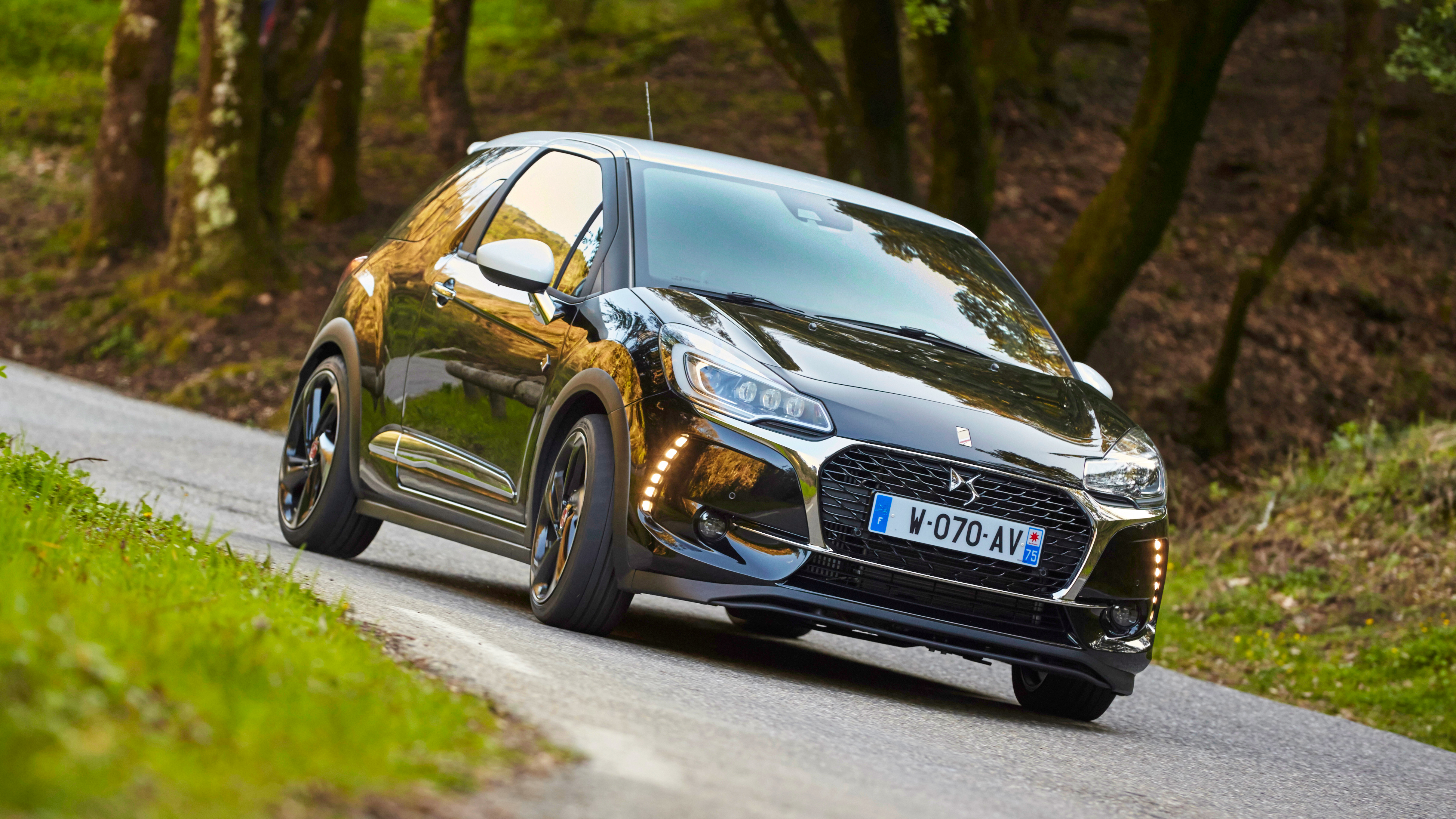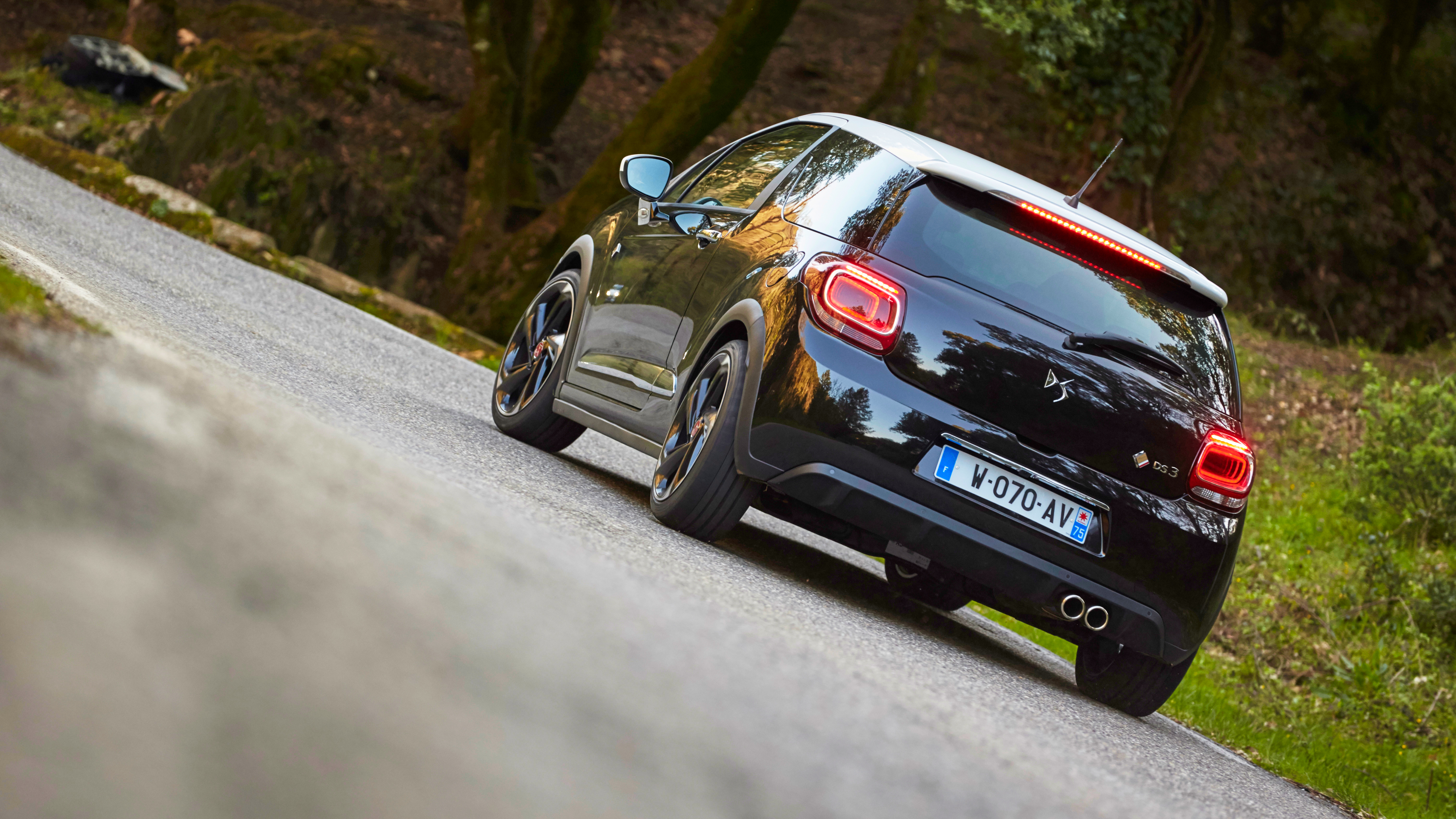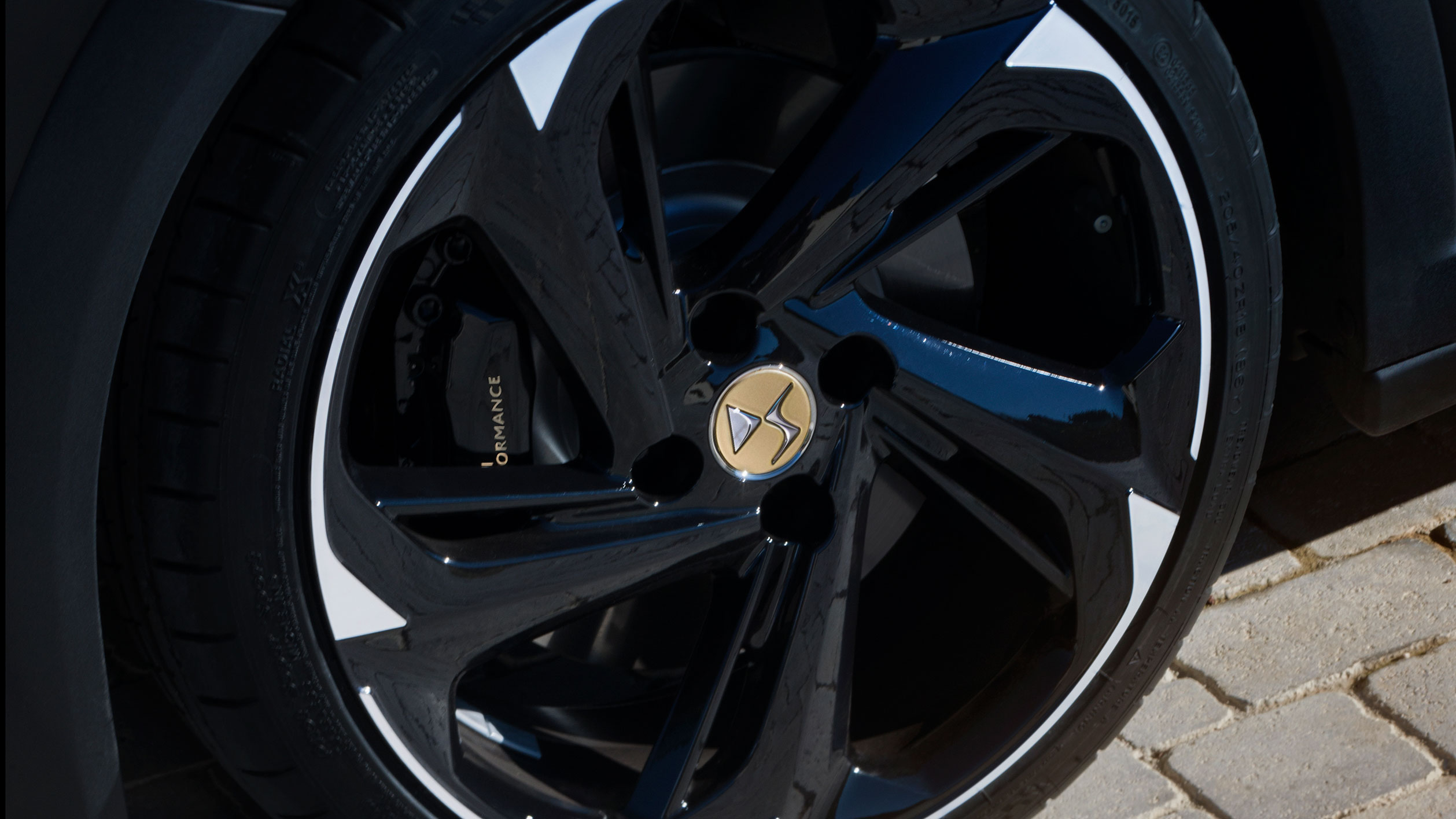
First drive: the 205bhp DS 3 Performance hot hatch
Let’s have it then: is the DS 3 Performance a proper hot hatch?
The specs say proper hot hatch. Behind the facelifted DS 3’s widescreen chrome face (Audi Q3, anyone?) lives a 1.6-litre turbocharged four-cylinder that delivers 205bhp and an extremely healthy 221lb ft. Already, that’s a chunk more urge than a VW Polo GTI or Ford Fiesta ST.
A Renaultsport Clio Trophy has more power, but less torque. No paddles here, though – a proper six-speed manual gearbox with shorter, punchier ratios than a boggo DS 3 does just fine – and the, um, Performance hits the bullseye. 0-62mph in 6.5 seconds is bang on for the fast supermini set, and it’ll stroll on to 143mph.
But DS wants to be all posh and premium.
Have no fear. By the time a Mini Cooper S hits 62mph, the DS 3 is 0.3sec ahead. Audi’s S1 is still the hot tot king, but so it should be with 228bhp, all-wheel drive, and a price tag cracking on for £26k. The leagues cheaper, front-wheel drive DS 3 Performance will set you back £20,795 – add another £2,000 if you want the fabric-topped Cabrio. (You don’t, but we’ll come back to that).
I’ve got a sense of deja vu. Haven’t we seen all this before?
Petrolhead nerds with long memories might remember a car from 2011 called the Citroen DS3 Racing. A limited run of 2,400 was built to celebrate Citroen’s dominance of the World Rally Championship, featuring a similarly powerful 1.6-litre turbo, a six-speed manual, 15mm lower suspension, wider tracks and much of the body clad in beautifully finished real carbon fibre. Just 200 were offered to hot hatch-mad UK buyers... with a price tag north of £24k.
This time, we’ve got less carbon, and mass production, so the economies of scale ram that price down from the stratosphere. Meanwhile, DS has had a rummage around in its sister brand Peugeot’s toybox, and nicked the bucket seats and torque-sensing front differential from the most focused Peugeot 208 GTi.
Enough setting the stage. How does the Performance, well, perform?
Good stuff first. The engine is a bit of a peach – it’s delightfully linear in its power delivery, rather than dumping its entire load of torque in a big untidy pile that the front tyres can’t manage. It revs smoothy and pulls keenly from zip to the redline, and because there’s a diff between the front wheels, traction is never an issue. It just feels well sorted, and decently quick.
Top Gear
Newsletter
Thank you for subscribing to our newsletter. Look out for your regular round-up of news, reviews and offers in your inbox.
Get all the latest news, reviews and exclusives, direct to your inbox.
So far as the motor goes, the only let down is its droney, nondescript noise. The burble of a Fiesta ST or Mini Cooper S is totally absent here. Boo.
The gearbox is merely okay. The six-speed shift is baulky from first to second, and though the rest of the action is slicker, it’s quite a long, light throw. The two cars I’ve just namchecked also sport more satisfying gearchanges.
No complaints about the brakes. Like the Peugeot 208 GTi by Peugeot Sport, which shares the same Brembo set-up, there’s a big chunk of bite right at the top of the pedal, so trimming speed on the way into a braking zone takes some acclimatizing. Once the brake sensitivity is familiar, you’re laughing. The brakes are strong, fade-free, and confidence inspiring.
That’s the going and stopping boxes ticked. How’s the handling?
This is a surprisingly stiff-riding car. The hard-top is on the ‘oof’ side of firm – and we’ve only driven the car on European roads so far, with little of the grittiness of British tarmac – but there’s no escaping the fact that car does get deflected by big bumps. It feels hardcore.
On the plus side, this isn’t one of those hot hatches that’s dominated by its differential, like the bigger RS Megane or Honda Civic Type-R. Yes, it really helps claw the car out of corners, but it’s not the scrappy, be-all-and-end-all of driving the DS 3 fast.
Now, if the exceptionally stiff ride was teamed with particularly incisive, talkative steering, you could forgive the uncompromising character of the thing. But it’s not. The steering is sensibly weighted and accurate, but nothing sensational. There’s this odd disconnect between the sharpness of the engine, brakes and the ride, and the general passiveness of the handling and gearshift.
Weirdly, the DS chaps say the Performance is supposed to be an everyday, comfy alternative to Peugeot’s hottest 208, which they refer to as ‘a track car’, which it obviously isn’t. It’s a seriously good road car, the only supermini that gets close to delivering the smiles of a Fiesta ST, in fact. On first impression, there’s no way the DS 3 feels softer or more compliant than the Pug.
And the Cabrio?
Possibly the most uncomfortable car I’ll drive this year. Apparently, the soft-top has exactly the same chassis set-up as the hard-top: 18-inch rims, and ‘Performance-spec’ bump stops, springs and dampers. The only difference between the two cars, apart from the generous extra headroom, is a 25kg weight penalty for the Cabrio. But on the road, you’d swear it was many times that, given how much the shuddering structure struggles to cope.
The ride is sharp and crashing, with every imperfection in the road sent shuddering through the roofless body with eye-watering resonance. The suspension just can’t do its job properly with the roof missing, so the entire body acts like a giant tuning fork instead.
So it’s no good then?
The Cabrio certainly isn’t. But the hard-top is more of an enigma. It’s fast and frenetic enough to be exciting, but the stiffness doesn’t sit well with the newly un-Citroen’ed DS brand’s supposedly premium image. We’ll report back with more once we’ve had a crack in the hot hatch’s natural back garden: the British B-road. We can’t help but want to fall for a fast supermini that looks this squat and cool, and goes this tenaciously.
Featured

Trending this week
- Car Review
BMW 1 Series






